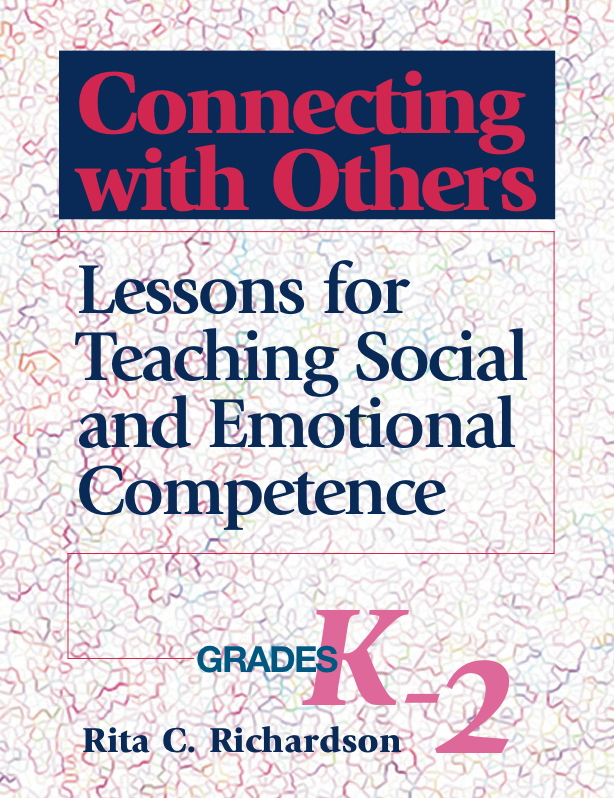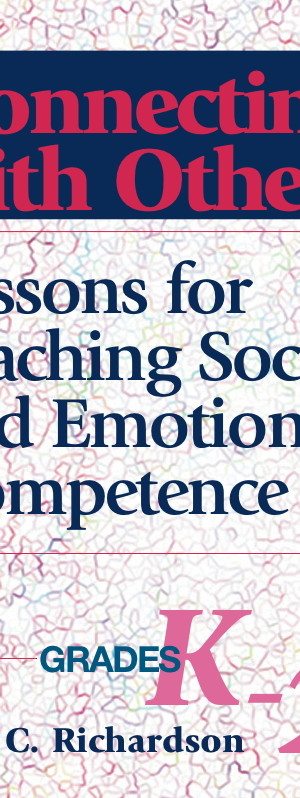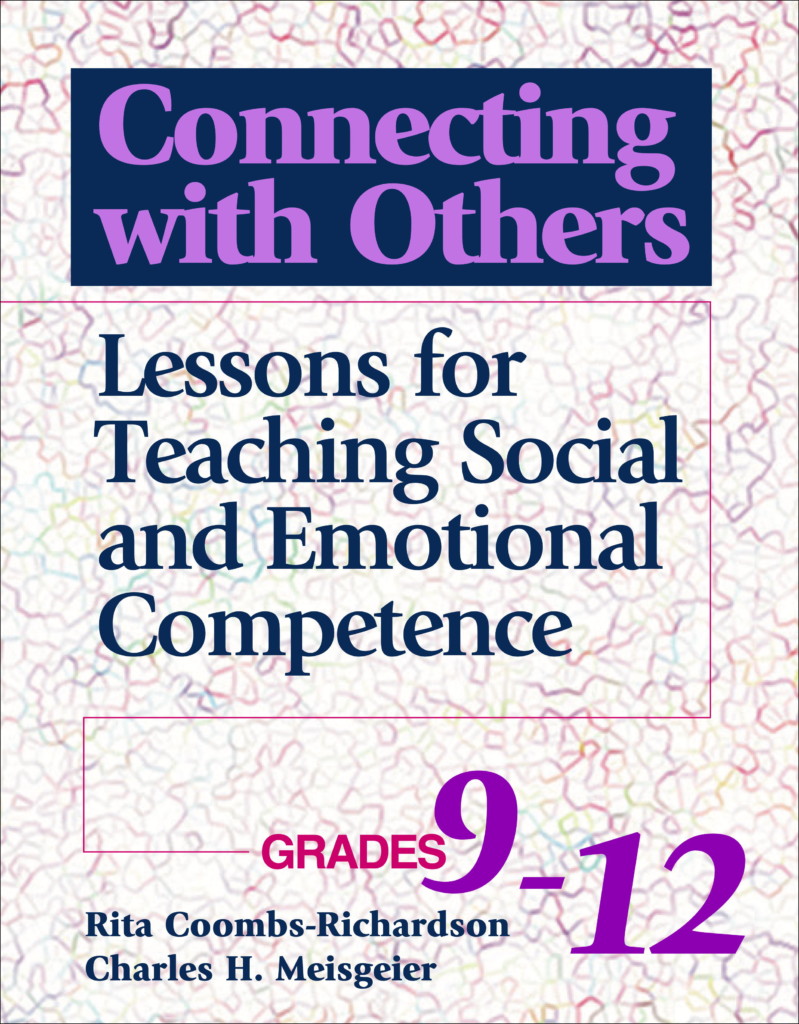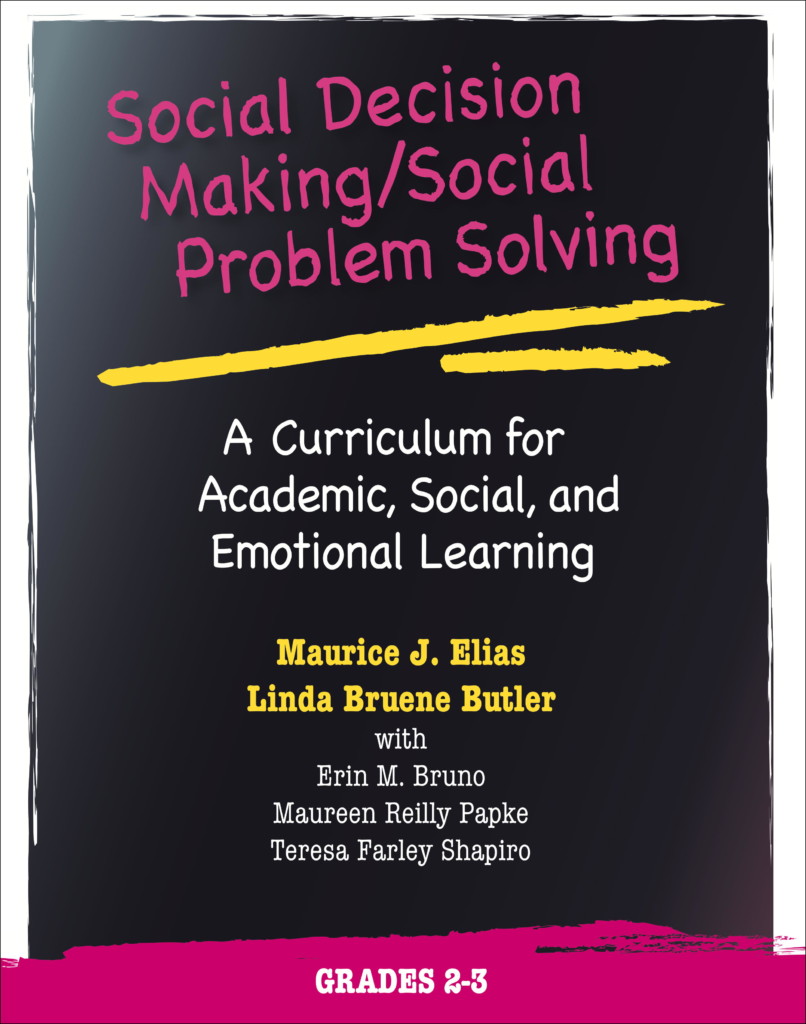The Connecting With Others curriculum for grades 3 through 5 will help students learn to be sensitive to differences, resolve conflicts without resorting to violence, and learn tolerance and acceptance of others.
Includes 30 lessons divided into five skill areas: Concept of Self and Others, Socialization, Problem Solving and Conflict Resolution, Communication, Sharing, Empathy and Caring. Instructional strategies include story-telling, relaxation, modeling, coaching, behavioral rehearsal, reinforcement, creative expression, self-instruction and more.
Reviews
“Perhaps one of the best books of its kind ever written, the publisher integrates quality text with graphics and artwork which facilitates easy use and is attractive for students.”
— Professional School Counseling
Getting Started
- The Me’s
- Aggressive, Nonassertive, and Assertive Behavior
- The Thinking Steps: Stop, Think, Plan, Check
LESSONS
Skill Area 1: Concept of Self and Others
- I Know I Can
- Let Me Do It Myself
- Let’s Be Friends
- Please Accept Me
- Someone Else Made Me Do It
Skill Area 2: Socialization
- Hello, Hello
- Right Time, Right Place
- Together We Stand
- Funny Ha, Ha
- Lighten Up
Skill Area 3: Problem Solving and Conflict Resolution
- I’ve Got a Problem
- Think Ahead
- Not Me
- Disagreeing Is OK
- Making Up, Not Breaking Up
Skill Area 4: Communication
- Listen Up
- Talking Without Speaking
- Talking and Touching
- Active Listening
- Clear Talk
Skill Area 5: Sharing
- To Share or Not to Share
- Two Heads Are Better Than One
- Sharing Our Time and Skills
- It’s Only Fair to Share
- Sharing Feelings
Skill Area 6: Empathy and Caring
- Loving Is Caring
- You Can Count on Me
- Loyalty
- Comfort and Support
- Helping Out
Appendices
A: Selected Bibliography of Children’s Literature
B: Parent Newsletters
FIGURES
Getting Started
- The Me’s
- Enthusiastic Me
- Impulsive Me
- Bossy Me
- Caring Me
- Thinking Me
- Find the Me’s
- Aggressive Behavior
- Nonassertive Behavior
- Assertive Behavior
- Traffic Signal
- STOP
- THINK
- PLAN
- CHECK
Skill Area 1: Concept of Self and Others
- Self-Recording Chart
- What’s Happening in These Pictures?
- Word Search Puzzle
Skill Area 2: Socialization
- Conversation Puzzles
- Calendar Organizer
- Behaviors and Consequences
- Journal Form
- Daily Schedule Sheet
- Cartoon Story
- Limericks
- Knock, Knock
- Lighten Up, Kenisha
Skill Area 3: Problem Solving and Conflict Resolution
- Feelings Wheel
- Feelings and Responses
- Yes and No Cards
- Problem Dialogues
- Young Lady or Old Lady?
- Rules for Mediators
- It’s My Glove
- Steps to Making Up
Skill Area 4: Communication
- Word Sets
- Understanding Body Language
- Body Language Quiz
- Communication Checklist
- Nursery Rhyme Lines
- Talking and Touching Quiz
- Active Listening Quiz
- Tangled Proverbs
- Clear Talk Quiz
- Using Idioms
Skill Area 5: Sharing
- Sharing Ideas and Opinions
- Fair Shopping Quiz
Skill Area 6: Caring and Empathy
- Love Is Caring Questions
- Loyalty Quiz
- Word Search Puzzle
- Comfort and Support Quiz
- Asking for Help Quiz
The Connecting with Others program is an evidence-based curricular approach for developing children’s self-awareness and awareness of others. Each lesson in the four volume series follows a specific lesson cycle and includes instructional materials for each activity. The theoretical underpinnings of the program include Transactional Analysis, Positive Assertion Training, and Cognitive Behavior Modification.
A study utilizing the Connecting with Others Grades K-2 and Grades 3-5 was implemented in five Louisiana public elementary classrooms containing general education and special education students. The purpose of the study was to investigate whether this social skills program would enable students with disabilities in inclusive classrooms to develop skills that would facilitate socialization with peers with and without disabilities. The research question addressed the students’ acquisition of social skills as a result of the training. The results of the study indicated with reasonable assurance that the students did grow in the skill areas identified in the program (Coombs-Richardson et al 2009).
In another study, the program was implemented in two early childhood classrooms located on the campus of a state university in Virginia. This study evaluated the impact of the social skills training on the social behaviors of the children. Participating were 30 students with an average age of four-years ten-months. The income levels of the families varied from low social economic status to high middle economic status. To assess the socio emotional skills level of each child, two examiners independently completed the Social Skills and Attitude Scale (SSAS) which is a component of the Connecting with Others program. The examiners observed the children and recorded children’s pre and post intervention behaviors on a checklist. The study yielded positive evidence that the social skills instruction and activities did make a meaningful difference in increasing targeted social skills of the children (Coombs-Richardson, Myran, and Tonelson 2009).
Two master’s thesis studies were conducted at Wayne State College in Nebraska to study the impact of social skills instruction using the Connecting with Others: Lessons for Teaching Social and Emotional Competence (Richardson 1996a). Hurner (2006) implemented the training in an after school program to determine if it would impact students’ behaviors on their return to their early childhood formal school setting. The general educators filled out rating scales on each of the students before and after the social skills instruction. Twelve of the 18 participating students showed improvement in all five categories. This study provided support for the use of a school-based social skills program to increase the social skills of students with behavior problems and/or difficulties with social interactions. Based on the results of the teachers’ responses, the researchers concluded that the social skills learned in the after-school program were generalized in the school environment.
Social skills training in early childhood sets the stage for students’ future behaviors in schools. Larson (2008) examined the effects of the Connecting with Others curriculum on the behavior of students in an early childhood program. The children received instruction taught by the researcher. Pre and post scales of the BASC-2 Rating Scale (Reynolds and Kamphaus 2005) and the Connecting with Others Rating Scale were used to determine if each child demonstrated progress in their behaviors and/or in their social-emotional skills as a result of the intervention. The instruction had a positive impact on the behaviors of the early childhood students who participated in this study. All 18 participants showed improvement in at least two categories derived from Connecting with Others (Richardson 1996) and improvement in at least one category from the BASC-2. Twelve of the 18 participating students showed improvement in all six of the Connecting with Others (Richardson 1996) categories. Additionally, 13 out of 18 students demonstrated improvement in at least seven of the 13 BASC-2 categories.








